How Do You Start a Bee Garden?
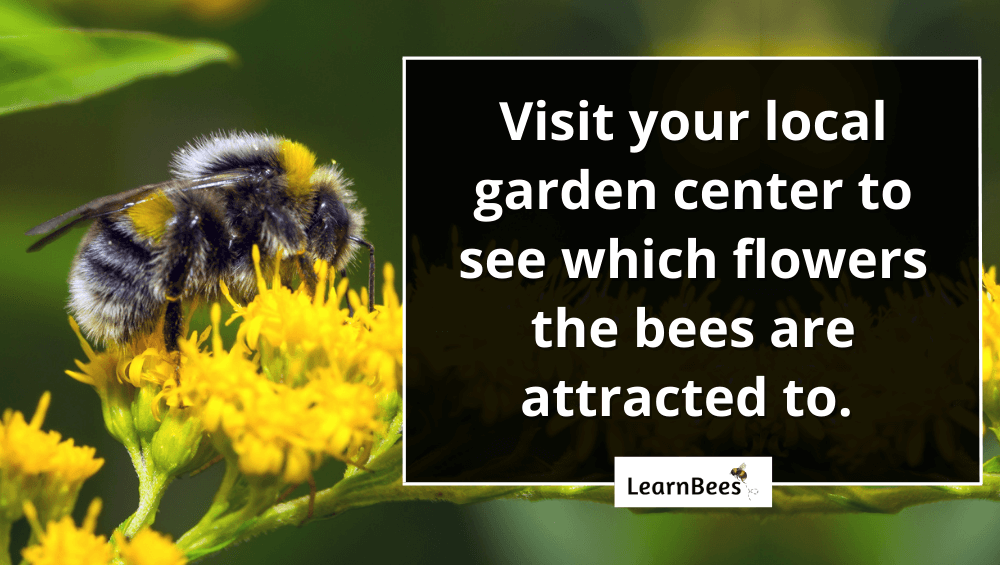
The best way to create a bee garden is to plant flowers native to your area.
Native plants are species that grow naturally in a certain region or area. They’ve gradually evolved to have a mutually beneficial relationship with native wildlife like bees, butterflies, and birds.
Bees visit native plants with plenty of nectar, for example, and transfer pollen as they visit other plants. Because these flowers have already adapted to your weather and soil conditions, they’re typically low maintenance and perfect for beginner gardeners.
So how do you plant a native bee garden?
Simple.
You can search online for plants native to your area. Sometimes these plants can be found at your local nursery. You can also grow them from seeds.
And here’s another tip:
Go to your local nursery and see which flowers the bees gravitate towards. This will help you know which plants the pollinators like.
For example, I notice that bees are drawn to plants like lavender, veronica, and pentas. So I have a few of each in my bee garden.
But remember:
Bees are active when temperatures are consistently above 55°F, and the weather is clear. So pick a warm, sunny day to visit your plant nursery.
What Do You Need in a Bee Garden?
One of the best things you can do for bees is to plant in pairs.
For instance, you should plant a row of lavender plants instead of only planting one or two. Planting flowers in clumps of four or more will help draw bees to your garden.
Additionally, planting a variety gives your local pollinators more to choose from. Different bee species prefer different flowers.
Bumblebees, for example, are drawn to plants like veronica and hostas. On the other hand, honeybees like sunflowers and zinnias.
You also want flowers that bloom throughout the seasons, so your bees have plenty of food during the spring, summer, and fall.
Here are a few flower suggestions for your bee garden:
1.) Pentas

Pentas is one of the best bee-attracting plants you can get. It blooms all summer long, even during the dog days of summer. The big clusters of starry blooms on pentas create a nice resting spot for bees, butterflies, and hummingbirds.
Pentas do well both in the ground and in containers and can even be a good houseplant if enough light is available.
- Zones: 9-11
- Light: Full sun
- Bloom time: Midsummer to early fall
- Flower color: Shades of red, pink, lavender, white, or purple.
- Size: 1 to 3 feet tall, 15 in. wide
2.) Salvia
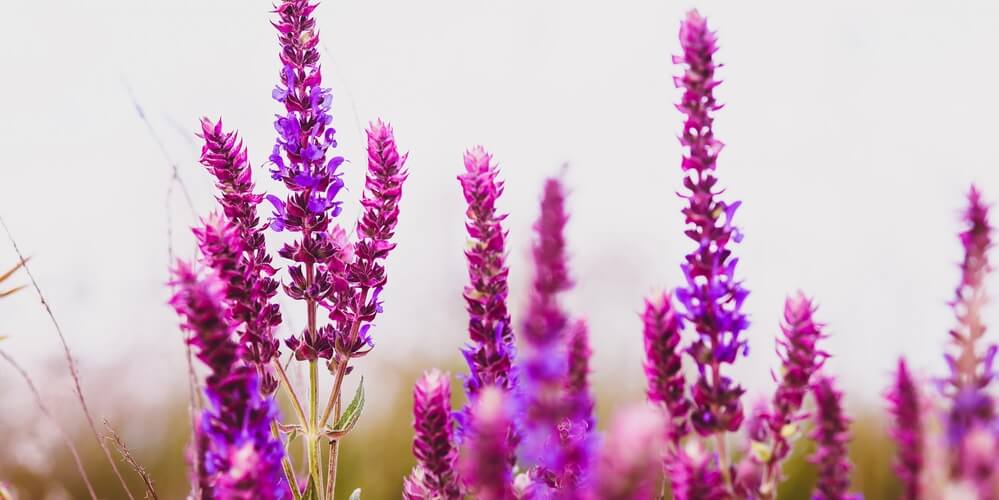
Anywhere there are salvia, there are bees.
Perennial salvia (also called “sage”) is a staple of any bee-friendly garden, providing aromatic blooms that offer a gorgeous display of color.
Thankfully, salvia resists deer and rabbits. Their leaves’ distinctive, pungent odor serves as a repellent to garden pests. Salvia is heat and drought-tolerant, making it a hardy plant that thrives in many conditions.
- Zones: 5-10
- Light: Full sun
- Bloom time: Spring, summer, fall
- Flower color: Blue, purple, pink, yellow, white
- Size: 1 to 2 feet tall, 1 to 3 feet wide
3.) Zinnias
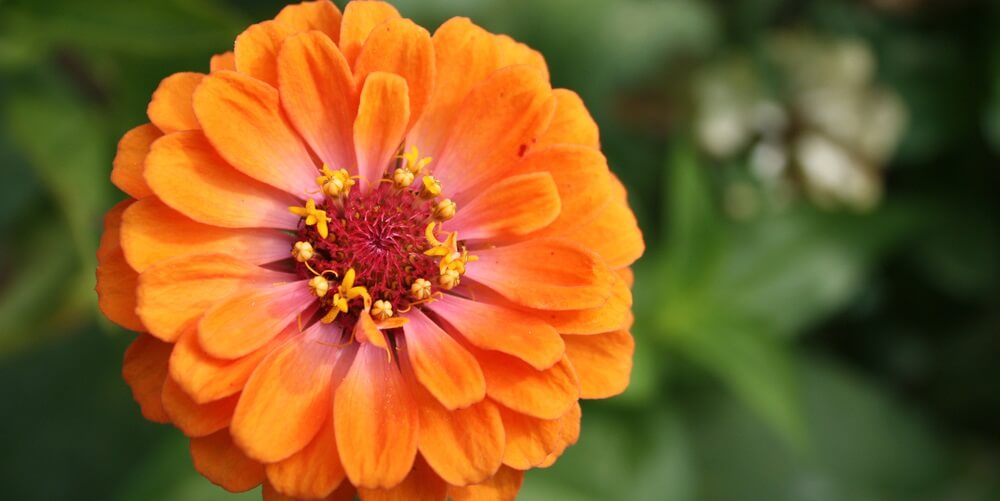
Zinnias are one of the best plants to grow; they grow fast and are easy to maintain.
Plus, they’ll create flowers up to the first hard frost of fall. They have bright, daisy-like flowerheads on a single stem, which makes them great for cut flower arrangements.
Zinnia flowers are a great way to add a burst of color to your garden, and they are bee and butterfly magnets.
- Zones: 3-10
- Light: Full sun
- Bloom time: Spring, summer, fall
- Flower color: Pink, purple, yellow, orange, white, red
- Size: 1 to 4 feet tall, 6-18 in. wide
4.) Hostas

Hostas are wonderful for shade gardens because they require almost no special attention and thrive easily. Reliable and simple to grow, hostas are long-lived plants that bees and hummingbirds adore.
While hostas are mostly known for their attractive foliage, you shouldn’t underestimate the importance of these plants in a bee garden. They produce beautiful summer blooms that are often light lavender in color.
- Zones: 3-9
- Light: Shade
- Bloom time: Summer
- Flower color: Pink, purple, blue, white
- Size: 1-4 feet tall, 10–60 in. wide
5.) Veronica
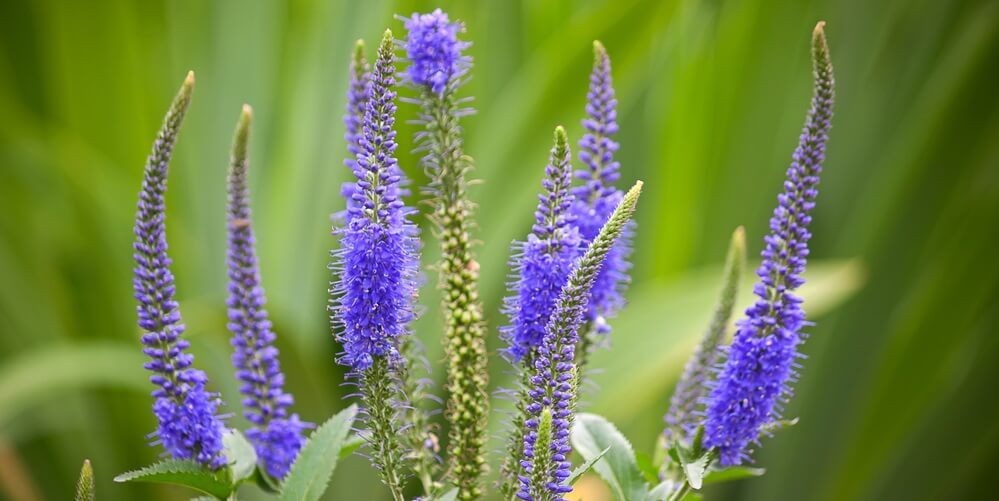
Veronica, also known as speedwell, is a beautiful and easy-to-grow perennial with long spikes of pink, purple, blue, or white petals.
Veronicas are perfect for bee gardens because their blooming spikes grab the attention of your local pollinators. Many varieties have a long blooming period and will continue to rebloom if deadheaded.
Plant veronica in full sun for best results.
- Zones: 3-9
- Light: Full sun
- Bloom time: Spring, summer, fall
- Flower color: Pink, purple, blue, white
- Size: 1-4 feet tall, 1-2 feet wide
6.) Purslane
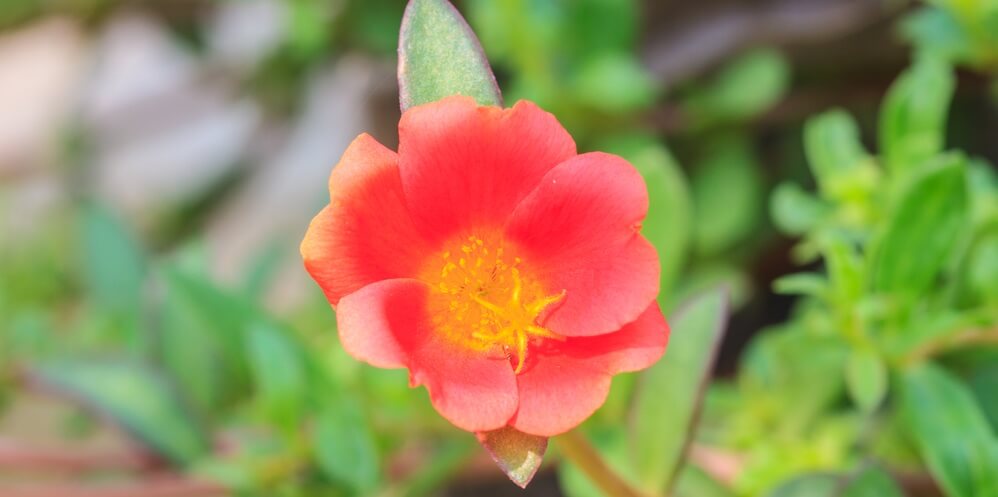
Common purslane, Portulaca oleracea, is a succulent that produces delicate blooms that bees love. It’s fast-growing and heat tolerant, making it ideal for gardeners at every skill level.
Additionally, purslane is one of the most nutritious edible plants you can grow. It’s considered a “superfood” because it’s rich in Omega 3 fatty acids, beta-carotene, and vitamin E.
The low-growing plant can be a container spiller or used as a garden ground cover.
- Zones: 8-11
- Light: Full sun
- Bloom time: Spring, summer, fall
- Flower color: Pink, yellow, orange
- Size: 4-8 in. tall, 12-16 in. wide
7.) Lavender
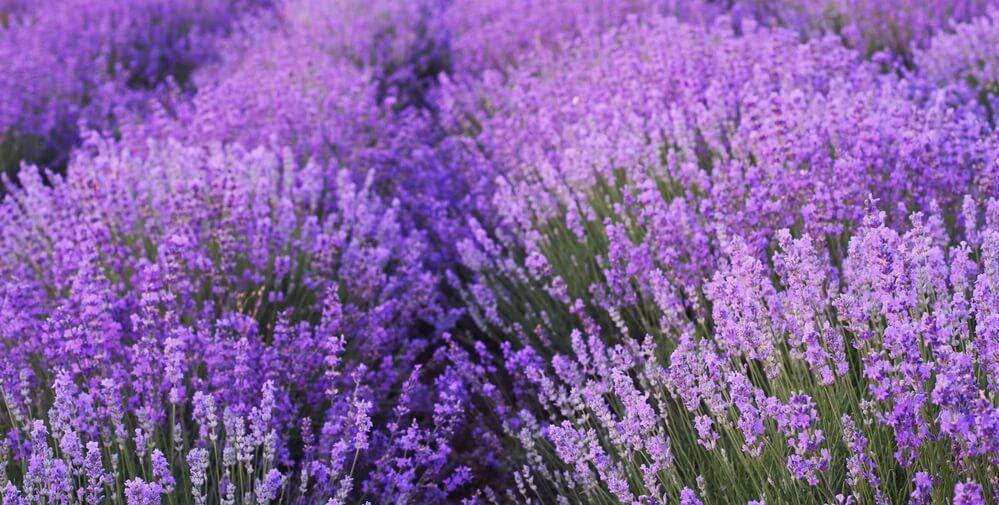
Lavender is a herb with many culinary uses but also serves as a bee magnet to your flower beds.
Lavender offers sweeping drifts of color from early summer into fall and is resistant to deer and rabbits. Plant lavender in the ground in a location that gets full sun. These plants will tolerate many growing conditions but grow best in warm, well-draining soil.
- Zones: 5-10
- Light: Full sun
- Bloom time: Summer
- Flower color: Purple
- Size: 1–3 ft. tall, 2–3 ft. wide
8.) Torenia
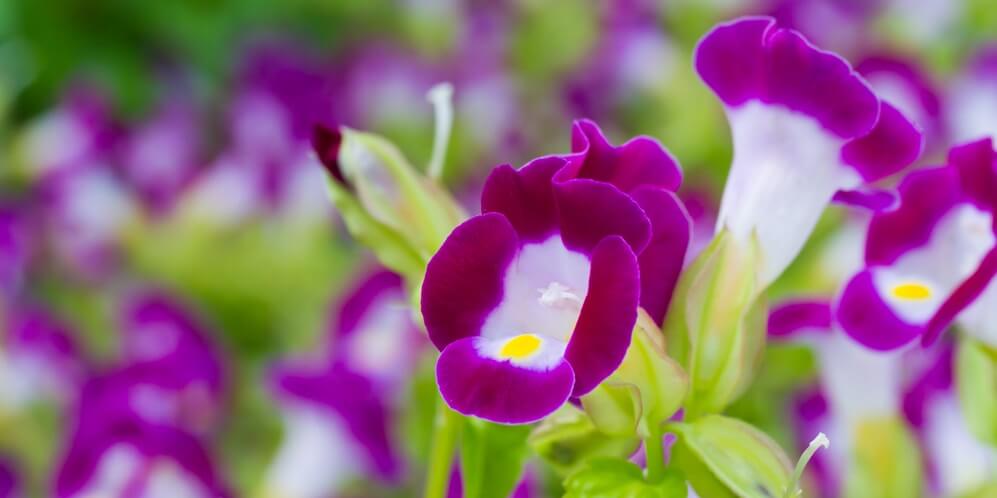
Torenia plants, also called wishbone, are great for bringing your local pollinators to your bee garden. They thrive in the partial sun while bringing some color and life to the flower beds.
Their trumpet-shaped blossoms come in several colors. Most torenia have a dark purple coloring with yellow markings.
Aside from keeping these flowers sufficiently watered and fed, they don’t require a lot of maintenance. Deadheading isn’t essential, though it can help to encourage more flowering throughout the season.
- Zones: 2-11
- Light: Partial sun
- Bloom time: Spring, summer, fall
- Flower color: Purple, pink, white
- Size: 6–12 in. tall, 6–9 in. wide
FAQs about Bee Gardens
- How do you start a bee garden?
- What is a bee-friendly garden?
- What do bee gardens do for bees?
- When should you plant a bee garden?
- How do you build a bee habitat?
- How can I attract more bees?
- Do bees prefer sun or shade?
- What is a honeybee’s favorite flower?
- What is a good size for a pollinator garden?
- What plant do bees not like?
- When should I plant bee-friendly seeds?
- Are marigolds good for bees?
How do you start a bee garden?
You can start a bee garden by planting flowers native to your area. Native plants are adapted to your local climate and soil, requiring less care and maintenance. They also provide habitat and food for local wildlife, including bees.
You can find local plants by searching online.
You can also start a bee garden by picking flowers from your local nursery to which the bees are attracted. Each year, I head down to my nursery and choose several flowers on which I see bumblebees, honeybees, and other pollinators.
—> Go back to the FAQs on bee gardens
More to Explore:
What is a bee-friendly garden?
A bee-friendly garden is a space where bees can find food, water, and shelter. To create a bee-friendly garden, you’ll need to plant various flowers that bloom at different times throughout the year.
Bees rely on pollen and nectar from flowers for food. When they collect pollen, they inadvertently transfer it to other flowers, which helps to pollinate them.
—> Go back to the FAQs on bee gardens
More to Explore:
What do bee gardens do for bees? Why do we need bee gardens?
We need bee gardens because bees are crucial pollinators for our ecosystems. Much of the world’s food supply relies on pollination by bees.
Bee gardens provide habitat and food for bees. By planting various flowers that bloom at different times throughout the year, you can provide a continuous food source for bees and other pollinators like butterflies.
—> Go back to the FAQs on bee gardens
More to Explore:
When should you plant a bee garden?
Most flowers should be planted during spring or fall, but summertime planting can also happen depending on your particular plant’s climate.
—> Go back to the FAQs on bee gardens
More to Explore:
How do you build a bee habitat?
The best thing for bees is to offer them various flowers. Bees rely on nectar and pollen from flowers for food. Pollen gives bees the protein they need to survive, while nectar provides them with carbohydrates.
Also, avoiding harsh chemicals in or around your bee garden is important. Such chemicals can harm your local pollinators, including bees, wasps, moths, butterflies, and hummingbirds.
—> Go back to the FAQs on bee gardens
More to Explore:
How can I attract more bees?
Plant native flowers in large clumps to attract more bees to your garden. Don’t just plant one or two plants and call it a day. Try to plant in big groups to entice your local bees to your area.
Besides that, simply remain patient and give your local bees a few weeks to find the flowers. Make sure you fertilize and water as necessary to keep the flowers as healthy as possible.
—> Go back to the FAQs on bee gardens
More to Explore:
Do bees prefer sun or shade?
Don’t worry. Bees will visit flowers you have in both the sun and shade.
With that in mind, bees are the most active on clear days when the sun is out, and the weather is pretty. Bees don’t like flying in heavy winds or rain, as it threatens them.
—> Go back to the FAQs on bee gardens
More to Explore:
What is a honeybee’s favorite flower?
Honeybees don’t have a “favorite” flower per se, but they enjoy plants like salvia, sunflowers, and zinnias.
—> Go back to the FAQs on bee gardens
More to Explore:
- Ground Bees: Are They a Threat to Your Yard?
- Wasps vs. Honeybees: Are They Different?
- Do Bumble Bees Bite?
What is a good size for a pollinator garden?
There’s no definitive answer. The more flowers you can plant for bees, the better. When I started my bee garden, I began with at least 50 bee-friendly plants.
—> Go back to the FAQs on bee gardens
More to Explore:
What plant do bees not like?
Bees are attracted to flowers that produce pollen and nectar. Some flowers, like roses, don’t produce nectar to attract pollinators so bees will ignore them.
The best thing to do is go to your local garden center and see which flowers the bees are attracted to. That’s the easiest way to plant a bee-friendly garden.
Also, try planting native flowers to entice native bees like mason bees, sweat bees, carpenter bees, and bumblebees.
—> Go back to the FAQs on bee gardens
More to Explore:
- Do Carpenter Bees Pollinate?
- How Long Do Bumble Bees Live?
- Honeybees vs. Bumblebees: How Do They Compare?
When should I plant bee-friendly seeds?
It depends on the plant species. Follow the instructions on the packet for proper planting.
—> Go back to the FAQs on bee gardens
More to Explore:
- Do Queen Bees Eat Honey?
- Are Worker Bees Male or Female?
- Queen Bee Versus Worker Bees – How Do They Compare?
Are marigolds good for bees?
Yes, bees love marigolds as long as the flowers have open centers that the bees can easily access. You don’t want to choose marigolds with too many petals because the bees won’t be able to reach the pollen and nectar.
Marigolds also attract ladybugs, which help keep your garden free of aphids and other pests.




